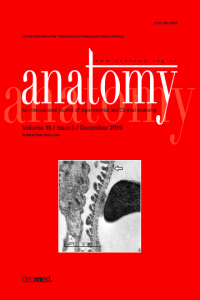Abstract
Project Number
16/14
References
- reference 1: Prof. Dr Chandra Bhushan Jha, Academic Dean, Head of department, Department of Human anatomy, B.P.Koirala. institute of health sciences, Dharan,Nepal chandraraj_2000@yahoo.com +977-9842288112
- reference 2: Additional prof. Dr Shamsher shrestha Department of Human anatomy B.P.Koirala. institute of health sciences, Dharan,Nepal shamsher2002@gmail.com +977-9842023087
Abstract
Objectives: Tooth size standards based on odontometric investigations can be used in age and sex determination in forensic
investigations and natural disasters such as tsunami, earthquakes etc. where bones are frequently fragmented. In such
cases, mandibular canines are found to exhibit the highest degree of sexual dimorphism. This study aimed to assess the usefulness
of mandibular canine for sex identification.
Methods: The present study was conducted based on measurements of mandibular canine teeth of 160 students (80 males and
80 females; aged 17–24 years) in Kathmandu University, Dhulikhel, Nepal.
Results: Mandibular canine index for right and left canines was found to be significantly different in males and females. The
identification of sex correctly using right mandibular canine index was 53.75% in males and 41.25% in females; and using left
mandibular canine index was 61.25% in males and 38.75% in females. The sex can be predicted correctly using a mandibular
canine index: being higher in males (57.5%) than females (45.62%). The mean mesiodistal width of the right and left mandibular
canines and intercanine distance were significantly greater in males than females. Sexual dimorphism in right mandibular
canine was higher (8.29%) than that of the left mandibular canine (6.12%).
Conclusion: Sex can be predicted correctly using mandibular canine index. Right mandibular canine teeth are more sexually
dimorphic than left. This may be influenced by gender, heredity, cultural, environmental and racial factors mostly influenced
by Y chromosomes.
Keywords
mandibular canine index intercanine distance canine canine teeth dimorphism mandibular canine index
Supporting Institution
Kathmandu University School of Medical Sciences
Project Number
16/14
Thanks
Kathmandu university institutional review committee and very special thanks to prof Dr Chandra bhushan jha , B.P. KOIRALA INSTITUTTE OF HEALTH SCIENCES
References
- reference 1: Prof. Dr Chandra Bhushan Jha, Academic Dean, Head of department, Department of Human anatomy, B.P.Koirala. institute of health sciences, Dharan,Nepal chandraraj_2000@yahoo.com +977-9842288112
- reference 2: Additional prof. Dr Shamsher shrestha Department of Human anatomy B.P.Koirala. institute of health sciences, Dharan,Nepal shamsher2002@gmail.com +977-9842023087
Details
| Primary Language | English |
|---|---|
| Subjects | Health Care Administration |
| Journal Section | Original Articles |
| Authors | |
| Project Number | 16/14 |
| Publication Date | December 31, 2019 |
| Published in Issue | Year 2019 Volume: 13 Issue: 3 |
Cite
Anatomy is the official journal of Turkish Society of Anatomy and Clinical Anatomy (TSACA).


